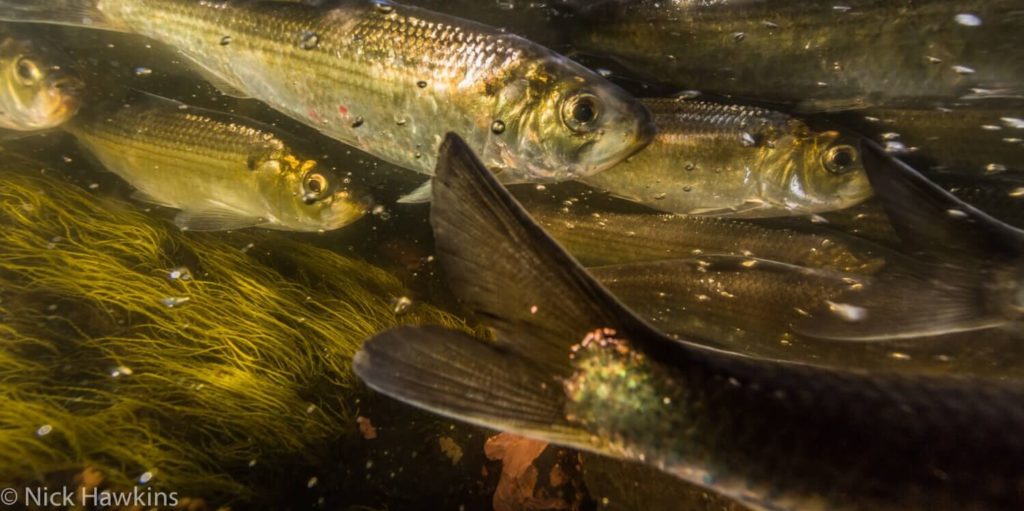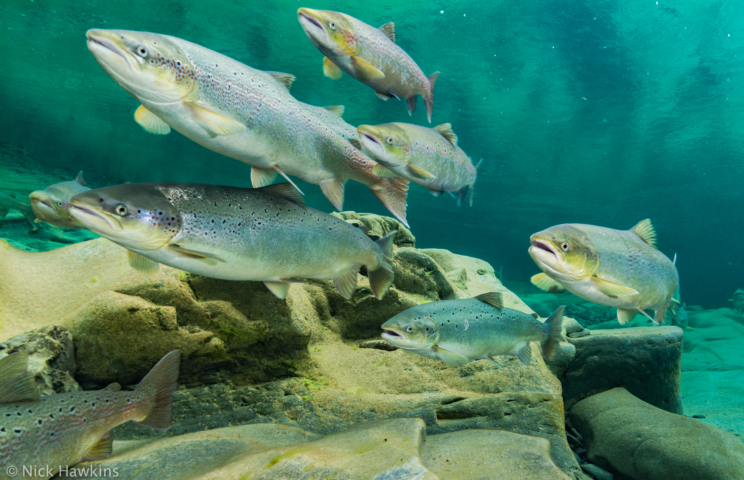Here’s a quick look at some of the files and projects our Marine Conservation team is working on in the early months of the New Year.
Salmon aquaculture
We’re keeping a close eye on industry plans to expand salmon aquaculture operations in the Bay of Fundy and working with partners in Atlantic Canada and around the country to hold industry accountable and push government to strengthen environmental regulations.
When commercial fish farms flooded the Bay of Fundy by the hundreds in the 80s, the Conservation Council was the first organization in the region to advocate for sustainable aquaculture practices and, looking to the crisis then crippling Norway’s waters, warned what would happen if the industry continued without reasoned regulation in the bay.
Over the years, program staff have cultivated a resident expertise on the science surrounding the industry – publishing two major reports outlining the problems and potential solutions to aquaculture in New Brunswick’s coastal waters – and remain active in monitoring current practices and promoting responsible alternatives.
The salmon aquaculture industry has certainly had its fair share of criticism and has been responsible for various forms of environmental problems – from sea-lice to the use of illegal pesticides to genetic contamination with wild fish.
With industry aiming expansion in the Bay of Fundy, our Marine team continues to push for a robust regulatory framework to ensure the industry is sustainable, does not degrade the bay’s critical ecosystem, and is in harmony with other economic, social and cultural activities on New Brunswick’s marine waters.

North Atlantic right whales
Like many others, we are looking forward to seeing the new documentary, Last of the Right Whales by Director Nadine Pequeneza with the support of many conservationists including wildlife cinematographer Nick Hawkins, a proud New Brunswicker and good friend of the Conservation Council.
The film follows the North Atlantic right whale migration from the only known calving grounds to the shifting feeding grounds in the Gulf of St. Lawrence, and tells the stories of the people committed to saving a species still struggling to recover from centuries of hunting and now threatened by climate change forcing them further north in search of food—and on a collision course with deadly ships and fishing gear. You can watch the trailer here.

Alewife restoration
Efforts to restore the Skutik (St. Croix) River continue to pay off. The first major fish barrier on the river, the Milltown Dam, is slated for removal this summer and fall (after the fish run). The Historic Salmon Fall will be restored with the dam’s removal.
The dam removal is one component of a comprehensive Skutik River restoration plan being led by the Peskotomuhkati Nation which includes habitat enhancement throughout the watershed and fish passage improvement at other dams upstream from Milltown. The Conservation Council and other watershed and environmental organizations are participating in the restoration efforts.
Ensuring migratory fish species like alewife, American eel, and Atlantic salmon have access to their native habitat is a cornerstone of successful restoration.
Restoring river herring species to the whole river system will be good for the river of course, but also the Bay of Fundy and all the whales, seals, birds and groundfish (like cod and pollock) that like to eat these nutritious fish.

